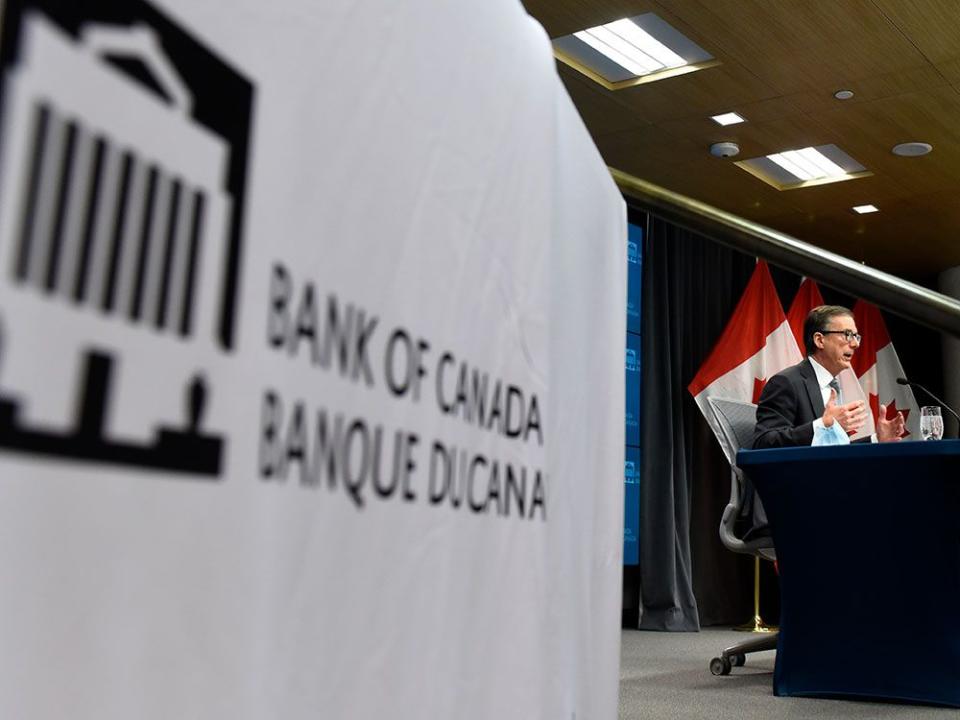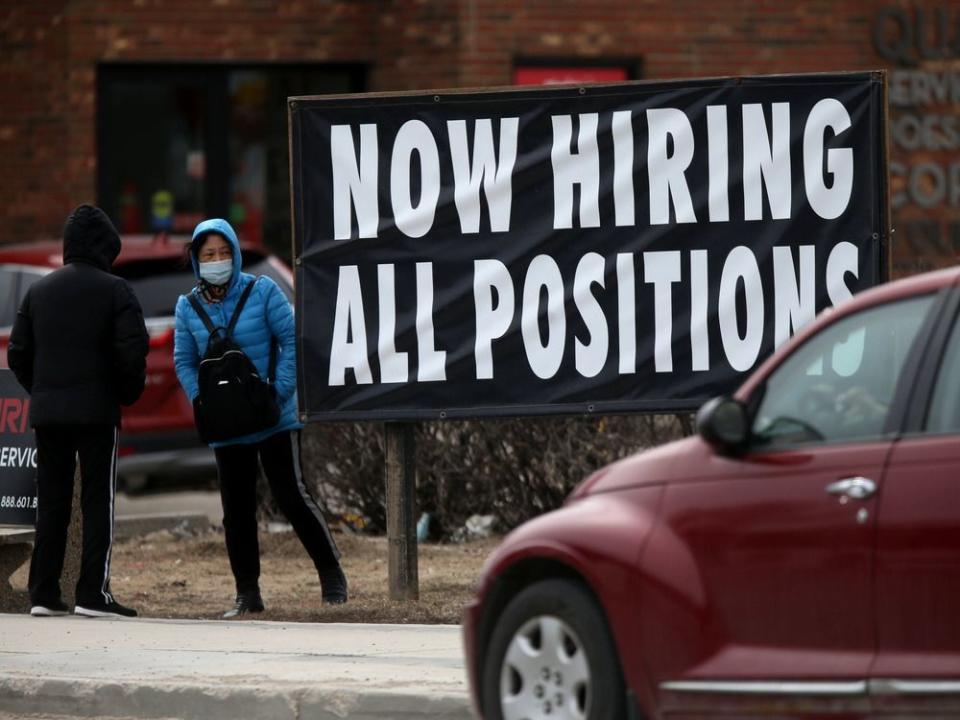Interest rates are going up today: The question is by how much?

The Bank of Canada will raise interest rates at the conclusion of its latest round of policy deliberations on Dec. 7. Governor Tiff Macklem has guaranteed it.
“This tightening phase will draw to a close,” he told the House finance committee on Nov. 23. “We are getting closer, but we are not there yet.”
Macklem didn’t give everything away. No one has a good read on whether he’s leaning towards another outsized increase, as he’s approved at the five previous interest-rate decisions, or whether he’s inclined to start pumping the brakes more gently and return to the central bank’s preferred pace of quarter-point changes.
The lack of guidance has made for an intense debate on Bay Street and Wall Street, where forecasters are split on whether Macklem, after hearing from his deputies on Governing Council, will opt to increase the benchmark rate a quarter of a percentage point (25 basis points) or half of a percentage point (50 basis points). The answer comes at 10 a.m. Ottawa time on Dec. 7. Until then, here’s what you need to know:
The backstory
The consumer price index has been increasing at an annual rate of more than three per cent — the high end of the Bank of Canada’s comfort zone — since April 2021, peaking at a dangerously fast rate of 8.1 per cent in June.
Macklem and his colleagues were caught be surprise. They thought the burst of inflation in 2021 was mostly related to supply backlogs that built up during the pandemic; they bet price pressures would recede as soon as things got back to normal. That never happened. In the meantime, the easing of health restrictions unleashed a wave of pent-up demand by households that had been forced to save for the better part of two years.

The Bank of Canada has been playing catchup all year. Macklem started with a tentative quarter increase in March, followed by “jumbo” increases of a half-point in April and June, a full percentage point in July, three quarters of a point in September, and a half-point in October, talking the benchmark rate to 3.75 per cent after starting the year at 0.25 per cent.
It’s been a jarring change of direction after more than a decade of ultra-low interest rates, as the target is now at it’s highest setting since 2008. Inflation appears to be slowing, but it was still hovering around seven per cent in September and October: too high for policymakers charged with keeping annual increases in the consumer price index around two per cent.
“The economy is still in excess demand,” Macklem said at the finance committee. “It’s overheated.”
The case for 25
Some economists worry that the Bank of Canada — along with the United States Federal Reserve and all the other central banks that are raising borrowing costs equally aggressively — is about to run the economy off the road. “We have conditions that are close to recession conditions internally,” Sébastien Mc Mahon, an economist at Quebec City-based Industrial Alliance Insurance and Financial Services Inc., said in a video to his clients, citing Statistics Canada’s tally of third-quarter gross domestic product, which showed that household consumption contracted in the July-September period for the first time since the second quarter of 2021.
There is reason to worry about what the sharp change in borrowing costs will do to consumer psychology, given central banks kept interest rates pinned near zero for so long. Indeed, Statistics Canada observed an increase in the household savings rate, which could signal retrenchment. That’s troubling because the Great Recession was as severe as it was because American households, saddled with elevated levels of debt, retreated (or declared bankruptcy) when financial conditions tightened. Canadian households are as indebted now as their American cousins were then. Bank of Canada research shows that half of variable-rate mortgages have reached levels at which payments are only covering the interest, a potential anchor on consumer demand.

Housing investment, which surged when the Bank of Canada dropped interest rates to fight the COVID recession, has now dropped in consecutive quarters. Housing has been the economy’s primary engine since at least 2010. Business investment and exports will have to pick up the slack, and that could be asking for too much with the United States and Europe also on the verge of recessions.
For some economists, weaker demand and plunging home prices amount to evidence the central bank’s assault on inflation is working, as domestic demand is the only source of price pressures over which policymakers have any control. Doing more to snuff out domestic demand when the main cause of inflation remains commodity prices and supply issues would be overkill, according to Royce Mendes, head of macro strategy at Fédération des caisses Desjardins du Quebec, who predicts Macklem will lift the benchmark rate to four per cent and then stop to assess.
“The economy simply can’t take much more this,” Mendes said in a note.
The case for 50
Charles St-Arnaud, a former Bank of Canada economist who now leads research at Alberta Central, read the GDP report on Nov. 29 and re-upped his bet that Macklem would taper his interest-rate increases to a quarter point next week. Three days later, after absorbing Statistics Canada’s latest Labour Force Survey, he changed his mind and advised his clients that the Bank of Canada would be hiking borrowing cost by a half point on Dec. 7.
Statistics Canada’s household survey found that employers added about 10,000 positions in November after creating more than 100,000 jobs the previous month; the unemployment rate dropped to 5.1 per cent, a number that suggests everyone who wants a job could get one; and that year-over-year increases in average hourly wages increase by more than five per cent for the sixth consecutive month, suggesting that workers are now demanding pay increases that offset inflation.

“The Bank of Canada needs to slow growth and create some excess capacity in the economy to fight inflation,” St-Arnaud said in a note. “This will likely lead to a rise in the unemployment rate and to job losses. With this in mind, a weakening of the labour market would be a welcomed outcome for the BoC.”
The pace of wage increases will be of concern to Macklem, not because he is waging a “class war,” as the head of Canada’s biggest private sector union said last month, but because expectations are key to the way central bankers think about inflation. If workers and suppliers think prices will be seven per cent higher next year, they will demand compensation commensurate with a greater cost of living. Macklem wants to crush such thoughts before they become entrenched. That’s why he’s been raising interest rates so aggressively. He needs to convince the public inflation is headed back to two per cent, or his job will be that much harder.
Kevin Carmichael: Jobs numbers show Bank of Canada hasn’t wrecked the economy after all
Kevin Carmichael: Economy grows faster than expected, raising odds of another big rate hike
FP Answers: The Bank of Canada lost $522 million in three months — here’s why
How Stephen Poloz thinks Canada can solve labour shortages and its lagging loonie
While Canada’s latest GDP numbers showed that higher borrowing costs are starting to bite, they also showed that the economy still grew at an annual rate of 2.9 per cent, considerably faster than the Bank of Canada’s latest forecast. The economy appears to have lots of momentum, and Macklem has been clear that he’s more worried about inflation getting out of hand than he is about a mild recession. In fact, the central bank’s latest forecast predicts that growth will essentially stall over the final few months of 2022, suggesting the central bank is ready to endure some short-term pain to get inflation back to target.
“Just about all the data released since the October BoC meeting … have pointed towards generally stronger demand than the BoC likely presumed,” Veronica Clark, an economist at Citigroup Global Markets Inc., said in a note. “It would send the wrong message, and generally be a strange time, to further slow the pace of hikes to 25 (basis points).”
Clark predicts Macklem will follow a half-point increase this week with quarter-point lifts in January and March, and then stopping at 4.75 per cent.
Meeting prep
Here’s some background material from the Financial Post to help you get ready for the announcement:
Kevin Carmichael: Jobs numbers show Bank of Canada hasn’t wrecked the economy after all
Watch: Economist Brett House on why the Bank of Canada could hike a half point
Profits in 15 sectors, including oil and gas, driving bulk of inflation: report
Fed’s Powell signals pullback in size of next interest rate increase, but with more hikes to come
Kevin Carmichael: Economy grows faster than expected, raising odds of another big rate hike
Peter Hall: Why inflation is not really the problem
Banks seek workarounds to avoid mortgage default for struggling variable-rate borrowers
• Email: kcarmichael@postmedia.com | Twitter: carmichaelkevin

 Yahoo Finance
Yahoo Finance 